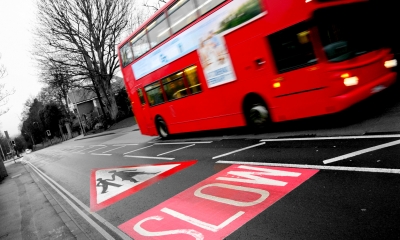
If you are driving a light commercial vehicle for your business, it pays to know the facts and restrictions. Not only can an overloaded vehicle struggle with a heavy load, it is also far more likely to pose a risk to other road users.
Van weight prosecutions
This isn't just a practical issue; it's a legal one. Both the police and the Driver and Vehicle Standards Agency (DVSA) take an overloaded van very seriously. In fact DVSA data reveals that overloading was the number one offence committed by van drivers in the last quarter of 2023/24. The average fine for the offence was £1,409.52. Can you afford to risk it by driving an overloaded vehicle?
What is a light commercial vehicle?
The term light commercial vehicle or LCV is used to describe any commercial vehicle up to a gross weight of 3.5 tonnes. Anything with a gross weight over 3.5 tonnes is classed as a heavy goods vehicle.
Every vehicle on the road has what is known as a plated weight and it is illegal to exceed this plated weight limit. The authorities have the power to stop, weigh and restrict any vehicle on a UK road.
This means that if your van is found to be overweight you will be issued with an immediate prohibition notice and your vehicle may be immobilised. Your vehicle could be redirected to somewhere nearby so that your load can be redistributed. There are also graduated penalties for driving an overweight vehicle:
| Severity | Endorsable? | Fixed penalty |
| Less than 10% | No | £100 |
| Over 10% but not more than 15% | No | £200 |
| 15% and over | No | £300 |
Where there is a serious case of overloading (30% or more or five tonnes), a court summons would be issued instead. You can be issued with more than one notice at a time if multiple issues are identified (for example, overloading and mechanical faults).
All vans are assigned a gross vehicle weight (GVW) limit when they are certified for use. It is a legal requirement for all LCVs to display their gross vehicle weight on the manufacturer's plate. The position of these plates varies. The most common location is inside the front door panel.
Take the Renault Master MH35 FWD dci 150ps. This van has a gross vehicle weight of 3,500kgs. This means that the maximum weight of the Renault Master including the van, the driver, any passengers, fuel and the load itself must not exceed 3,500kgs.
As well as gross vehicle weight, there's also the issue of kerb weight. This refers to the vehicle without driver, passengers or load. The weight includes all fuel levels and any items of standard equipment. To work out the payload you would take the kerb weight away from the gross vehicle weight.
Example: Renault Master MH35 FWD dci 150ps
Gross Vehicle Weight: 3,500kgs
Kerb Weight: 1,921kgs
Payload: 1,579kgs
The payload of 1,579kgs is the amount of useable weight available in this van; however, from this number you have to deduct the weight of the driver, any passengers, personal items and any ancillary items including ply-lining, racking, roof bars and so on.
You also need to know your van's axle weights. It is extremely important that your load is distributed correctly across both axles. Each axle has a weight limit. If the vehicle exceeds either the front or rear axle weights then it is breaking the law. In fact it is possible for the van to be under the GVW weight limit but exceed the rear axle limit - meaning that is actually being driven illegally. You can be fined up to £300 or get a court summons if your van exceeds its maximum permitted axle weight.
It's always best to know your restrictions; so as long as you bear all of this in mind you'll most likely be able to carry on business as usual. However, if you have any doubts, take your van to the local weighbridge and get your vehicle checked.
Sponsored post. Copyright © 2017 Debbie Monro of Van Leasing.


